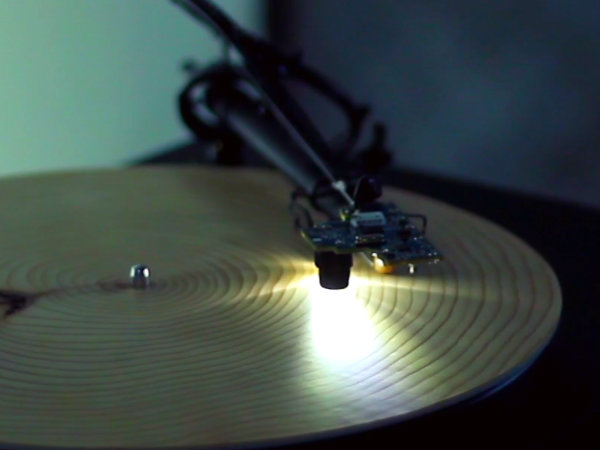
A few weeks ago, a listener shared a video showing Austrian media artist Bartholomaus Traubeck making the connection between year rings of a tree trunk and grooves of a record.
You may have seen this: His record player "plays" slices of wood, with the year rings translated into music.
The first thing I thought when I watched the video was, "Wow, that's a cool idea." Next I wondered, "How is he doing this?"
Obviously, this machine is not playing the wood directly. Here's a better description of what's happening:

It sends that data over to Ableton Live audio production software, where it's turned into the piano notes we hear.
Traubeck's algorithm gives certain types of trees different mixtures of scales, based on tree color and the overall texture of the wood. For instance, a fir tree grows quickly, therefore has larger gaps between the rings, which means the resulting music is more minimalistic (Traubeck chose the key of C minor for firs).
Throw a slice of ash tree (with rings very close together) on the player and the music is more compressed and complex.
Traubeck told the public radio program Living On Earth that he was inspired by a 1977 album by rock band Jethro Tull, titled “Songs From The Wood.” On the back jacket, a record player tonearm is pictured on top of a tree stump.
Traubeck talked about each “performance” of his music being a little different:
“It’s sort of a poetic translation into music. Every time you put the record on, even though it’s the same slab of tree, it will be slightly different, because I would have to start at the exact millimeter point of the record every time, which I can’t. If I would have to say what part of the music is coming from me and my decisions and what part is coming from the tree, then I would have to say, I guess 50/50.”
Interested in hearing more of Traubeck’s piece, titled “Years”? You can listen to and download his recordings of spruce, ash, oak and other trees here:
Matt Weesner hosts Night Music weeknights on CPR Classical.









